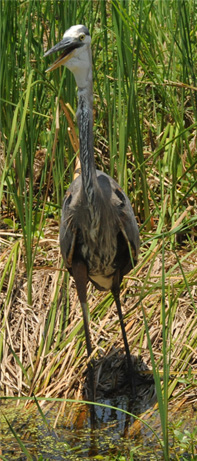Nature Boat Tour of Rice Field
June 17, 2015
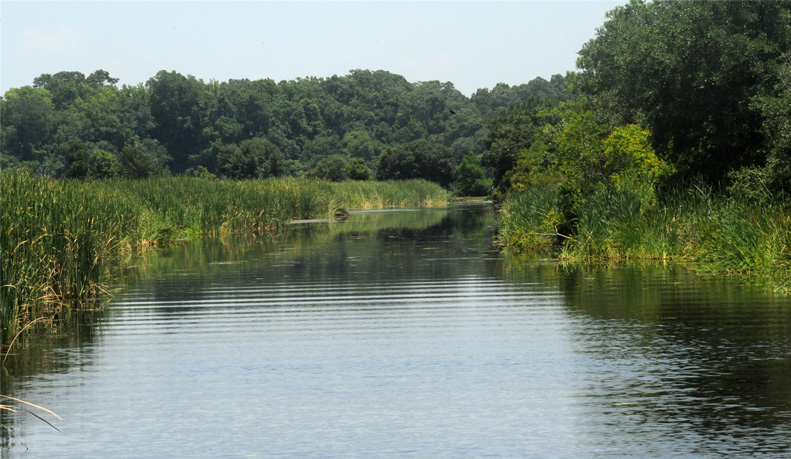
 | After our house tour we went to the boat dock for a tour of the aquatic nature preserve which had been one of the rice fields in the 1700s and 1800s. On the right of the view above is a manmade dike which controlled water exchange with the Ashley River just over the dike. As we boarded the boat in the channel, there was an anhinga just across from us, drying its wings in what our guide called its "batman pose". |
I was quite interested in our guide's description of the rice cultivation in this area, having spent a good bit of my teenage summers in rice fields in Arkansas. He said it reached 82 million pounds of "Carolina gold" one year. We had already heard that the Drayton family had immigrated to that area from Barbados, and had unsuccessfully tried several other crops before trying rice. But growing rice was tricky because it will not grow in brackish water, only fresh water. So they diked this area off from the Ashley River right next to it because it is a tidal river with brackish water. They did however find out that when the tide was going out, the salty water was on the bottom, being denser, and the top foot or two of the river was fresh water. |  |
They made pipes by hollowing out cypress logs and made gates so that they could let water in as the tide started out to flood the fields with fresh water. The dikes had to be high enough for confidence that the water would not overflow them - he made the statement that if saltwater got in,they couldn't grow rice for two years.
The growing pattern was much different - they provided a wet but not flooded field, and the female slaves planted the rice in rows three feet apart by patting it in with their feet. Then when the rice had germinated, they flooded to 1 foot to allow the rice to grow straight up that high. Then they went dry for a period and hand cut all the weeds and grass between the rows and left it on the ground. Then they flooded to two feet and raked the grass to the side and burned it. At harvest time they hand-cut the rice with scythes and carried it by hand from the fields. From the pictures I saw, the bundles looked like the rice stalks might be 4 ft long, so it grew much higher than today's rice.
 | As we got underway we saw a number of these moorhens foraging near the large grass collections. 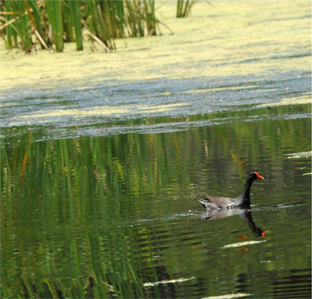 |
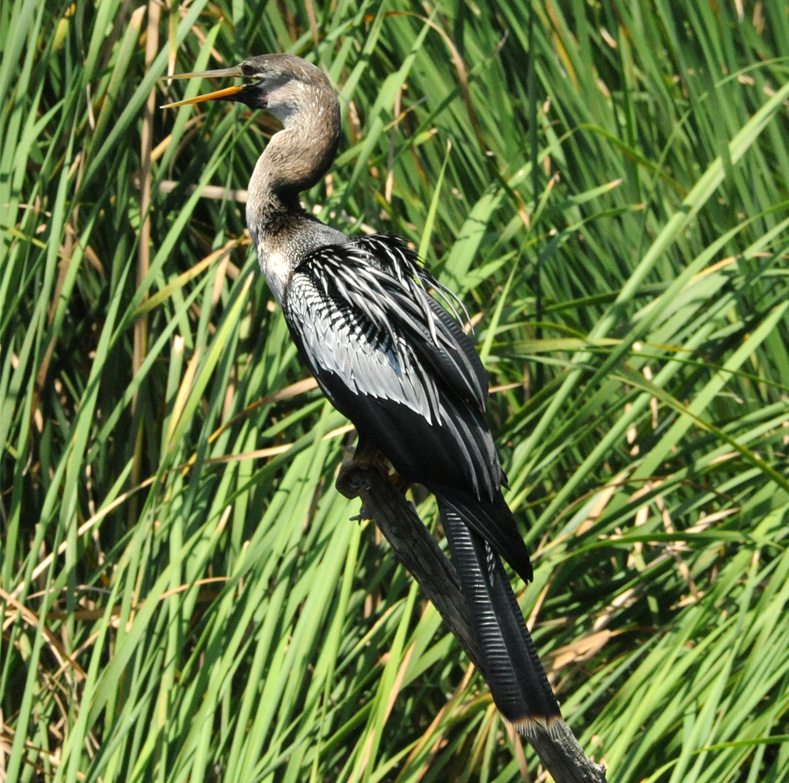
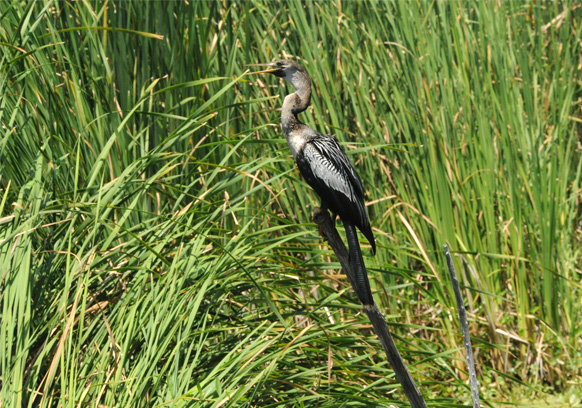 | This area seemed to particularly suit the anhingas as well. This one has gotten himself all dried out and is probably about ready to go fishing again. 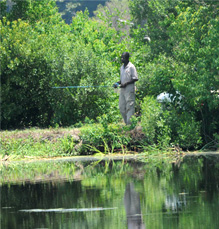 |
There be anhingas everywhere! Mostly wet and frazzled-looking ones. 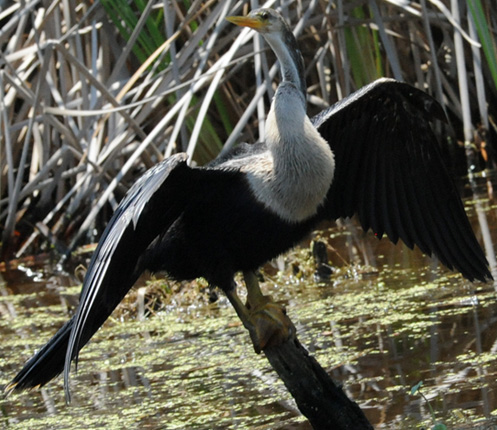 | 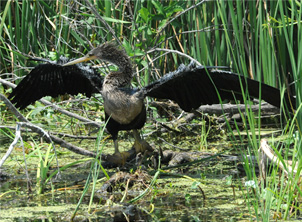 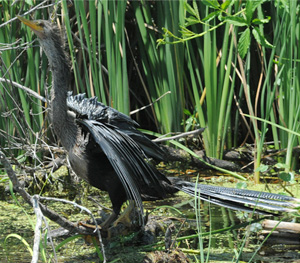 |
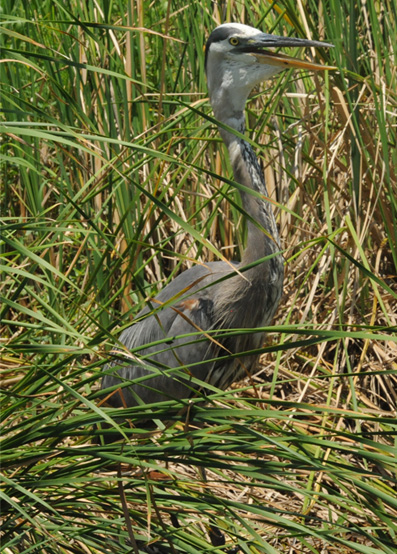 | This great blue heron had heard that there are fish to be had, so he is ready.
|
 | The moorhens were certainly active. This one swam across right in front of the boat. 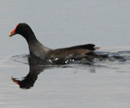 |
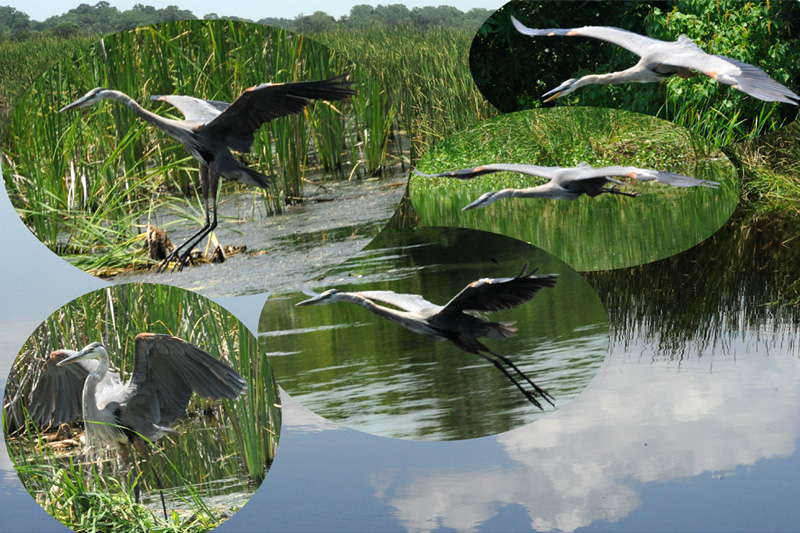
Another great blue heron flys in to join the party. 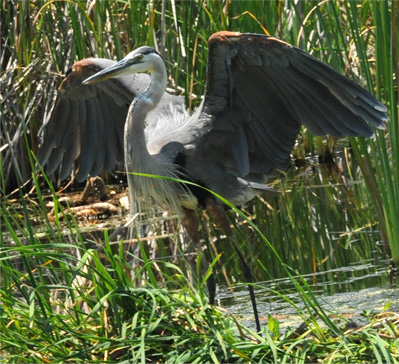 | 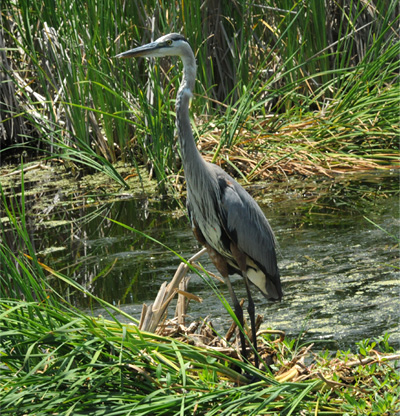 |
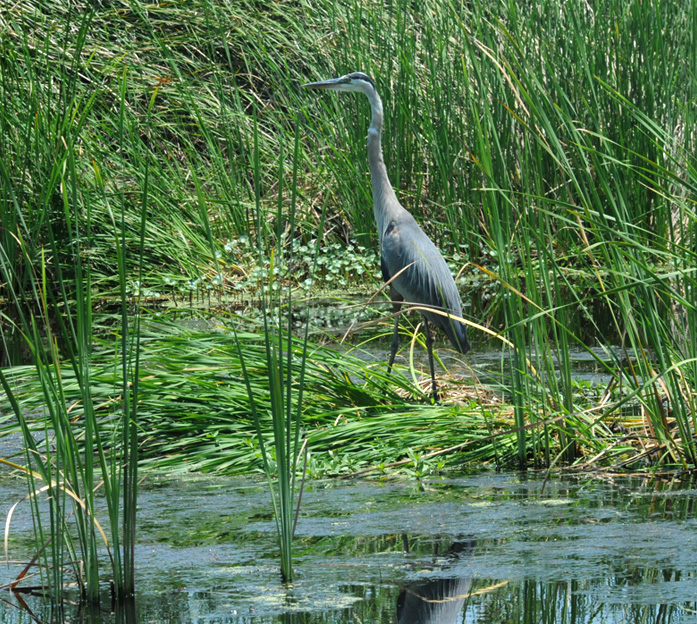 | Yet another elegant great blue heron stands ready at the grass's edge. |
Another moorhen swims boldly, or foolishly, out in front of the boat. 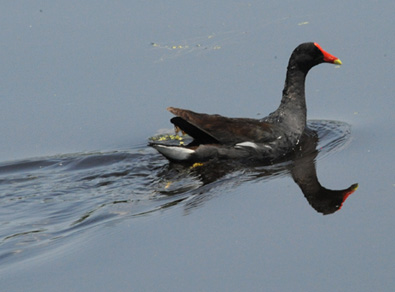 | 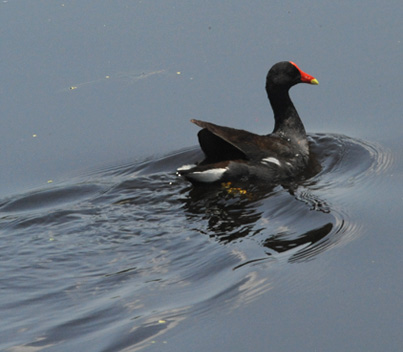 |
One of our guide's stories was that the slaves knew these moorhens as "the Jesus birds" because when alarmed they would walk on water. And this one did when the boat got close.
The anhinga has to spend a lot of time drying its feathers because it swims underwater so much. Besides his "batman pose" line, our guide's story was that the slaves' name for the anhinga was "the snake bird".  | 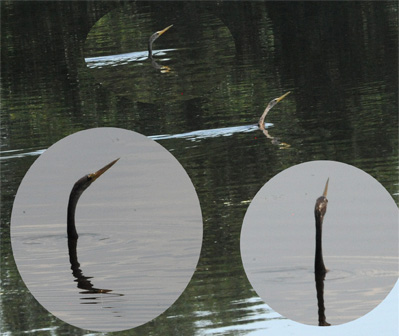 |
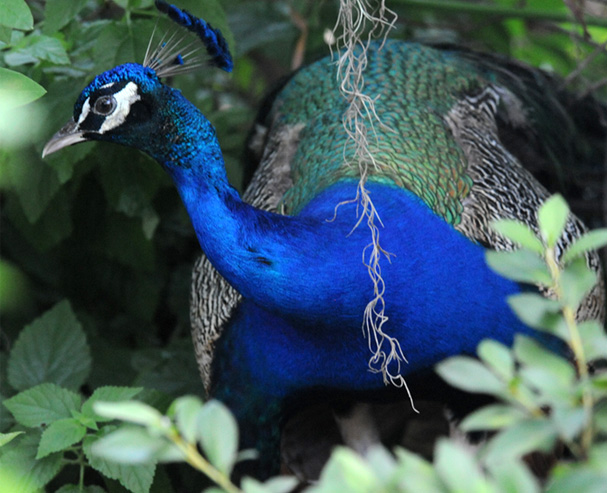 | After our nature cruise through the historic rice field, we treated ourselves to some ice cream and enjoyed the company of this beautiful peacock. We had really seen an amazing amount of bird life during our brief boat tour. |
| Magnolia Swamp walk |
2015
